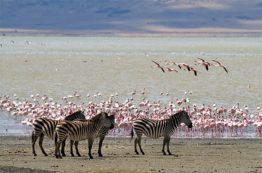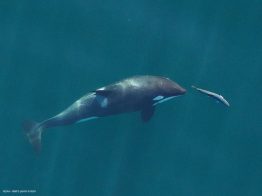The common murre is a self-sufficient, resilient bird. Though the seabird must eat about half of its body weight in prey each day, common murres are experts at catching the small “forage fish” they need to survive. Herring, sardines, anchovies and even juvenile salmon are no match for a hungry murre. So when nearly one million common murres died at sea and washed ashore from California to Alaska in 2015 and 2016, it was unprecedented — both for murres, and across all bird species worldwide.
Read more at UW News »Fisheries management is actually working, global analysis shows
Nearly half of the fish caught worldwide are from stocks that are scientifically monitored and, on average, are increasing in abundance. Effective management appears to be the main reason these stocks are at sustainable levels or successfully rebuilding. That is the main finding of an international project led by the University of Washington to compile and analyze data from fisheries around the world.
Read more at UW Today »Connecting society and the natural world
Nives Dolšak writes often on big environmental issues, and frequently publishes in the popular press about how society connects to the natural world. We sat down with Dolšak, who is a professor and the director of the School of Marine and Environmental Affairs, and asked her why she chooses to write about the social side of all things environment, and how she approaches writing about such topics for broad consumption.
Read more »Life could have emerged from lakes with high phosphorus
Life as we know it requires phosphorus. It’s one of the six main chemical elements of life, it forms the backbone of DNA and RNA molecules, acts as the main currency for energy in all cells and anchors the lipids that separate cells from their surrounding environment. But how did a lifeless environment on the early Earth supply this key ingredient?
Read more at UW News »Resident orcas’ appetite likely reason for decline of big Chinook salmon
Killer whales prefer to eat only the biggest, juiciest Chinook salmon they can find. The larger the fish, the more energy a whale can get for its meal. Each year these top ocean predators consume more than 2.5 million adult Chinook salmon along the West Coast. Except for the endangered southern resident population in Washington, all other fish-eating orca populations that live along the coast, called “residents,” are growing in number.
Read more at UW News »





